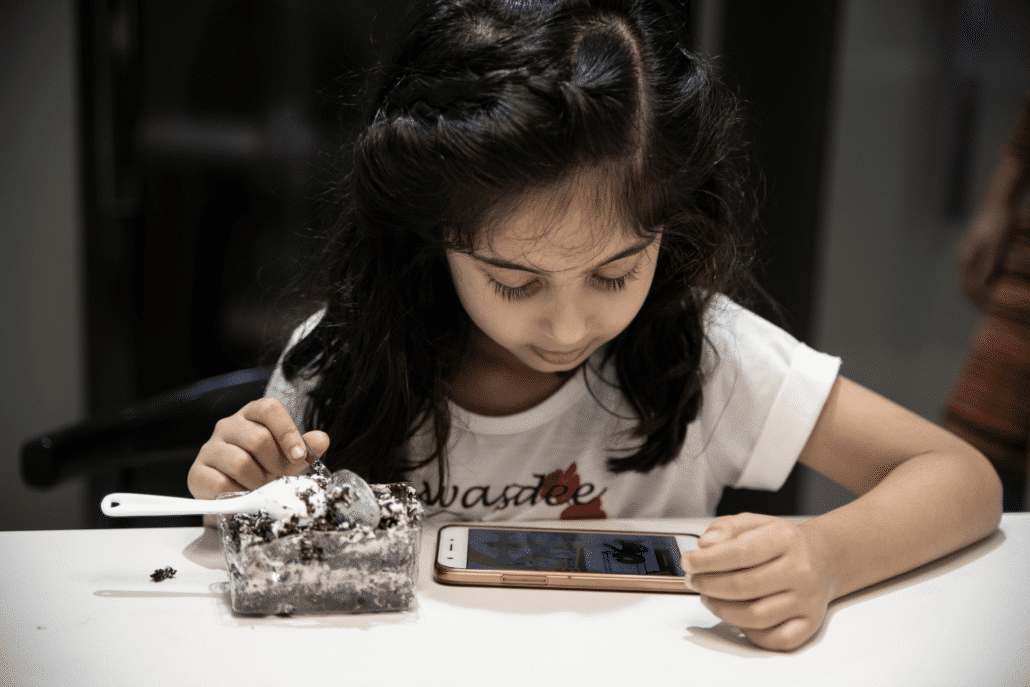
How can we protect our children from the risk of screen addiction?
Virtual relationships
Children are starting younger and younger, and learning to communicate behind a screen. Face-to-face verbal and non-verbal communication is being lost. This leads to many misunderstandings and misinterpretations at both relational and social levels.
What’s more, we’re hearing about cyber-harassment on social networks and non-consensual images or videos circulating… among other web-related phenomena.
How can we protect our children from the risks of screen addiction?
We have all the virtual means of communication to speed up and strengthen contacts. Despite all this, we’re losing the real, human way of communicating.
How can we teach our children the best ways to communicate when they’ve never known a world without omnipresent screens?
The only answer to these questions seems to be direct, four-eyed communication.
Show and explain the risks, dangers, positives and negatives, with concrete examples, surfing the web and pointing to pages that demonstrate these problems.
Prohibiting them won’t do much good, because they’ll find other ways to use screens. The most important thing is that they understand why, even if it’s not immediate and they’re angry, it doesn’t matter! The day will come when they will thank you for teaching them to communicate using looks, gestures, words, emotions, voice, tone, smiles, courtesy and respect.
How can we protect our children from all these risks?
We have all the virtual means of communication to speed up and strengthen contacts. Even so, we’re losing the real, human way of communicating.
How can we teach our children the best ways to communicate when they’ve never known a world without omnipresent screens?
The only answer to these questions seems to be direct, four-eyed communication.
Show and explain the risks, dangers, positives and negatives, with concrete examples, surfing the web and pointing to pages that demonstrate these problems.
Prohibiting them won’t do much good, because they’ll find other ways to use screens. The most important thing is that they understand why, even if it’s not immediate and they’re angry, it doesn’t matter! The day will come when they will thank you for teaching them to communicate using looks, gestures, words, emotions, voice, tone, smiles, courtesy and respect.
How can we protect our children from all these risks?
We have all the virtual means of communication to speed up and strengthen contacts. Despite all this, we’re losing the real, human way of communicating.
How can we teach our children the best ways to communicate when they’ve never known a world without omnipresent screens?
The only answer to these questions seems to be direct, four-eyed communication.
Concentration and screen
Our productivity is falling
How can you regain control of your daily life and stop being a slave to your smartphone?
Young people aged between 11 and 15 spend around 4h30 a day behind a screen during the week and 7h30 a day at weekends, between smartphones, tablets, computers and TV.
When we are disturbed by a notification, it takes us around 23 minutes to refocus on the task we were doing before we were interrupted.
We even tend to reproduce this behavior and interrupt the work we’re doing ourselves, without any outside intervention.

The World Health Organization (WHO) has included the ” in its list of officially recognized diseases. It is characterized by “an increased focus on digital games and a growing practice, despite the damaging repercussions”.
What are the solutions to screen addiction?
- growing awareness from an early age
- better communication with children and teenagers
- well-considered management of weekly screen time
- an analysis of the reasons for ” hiding behind a screen “.
- a balance between real needs and excessive screen use
